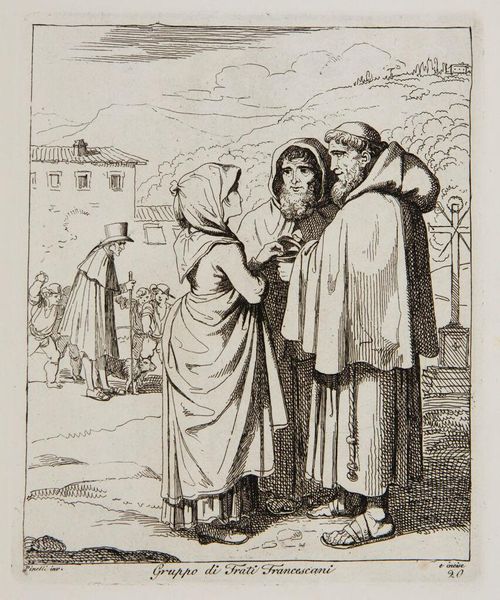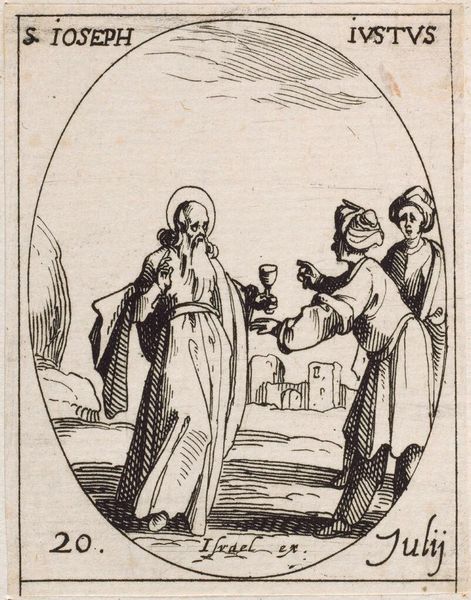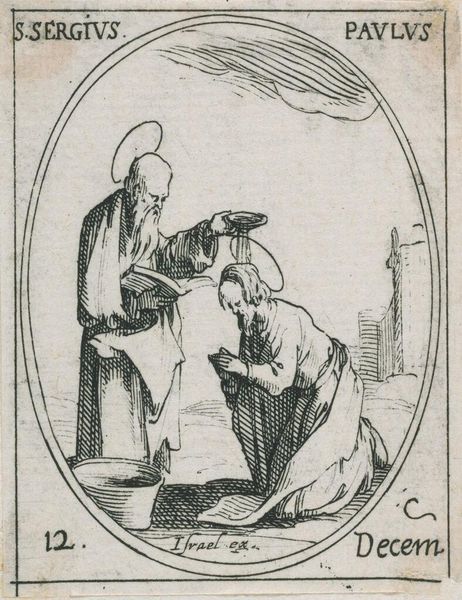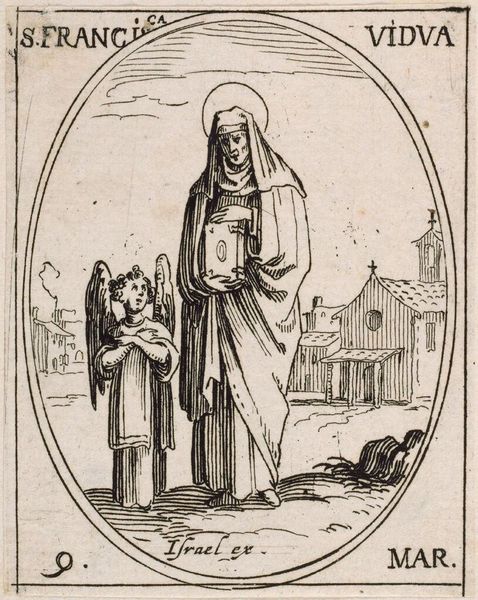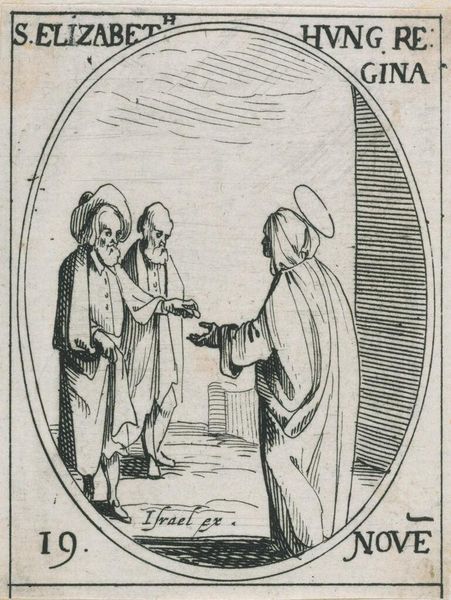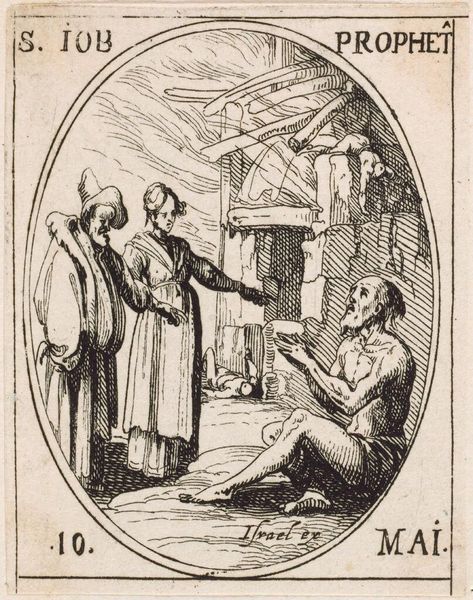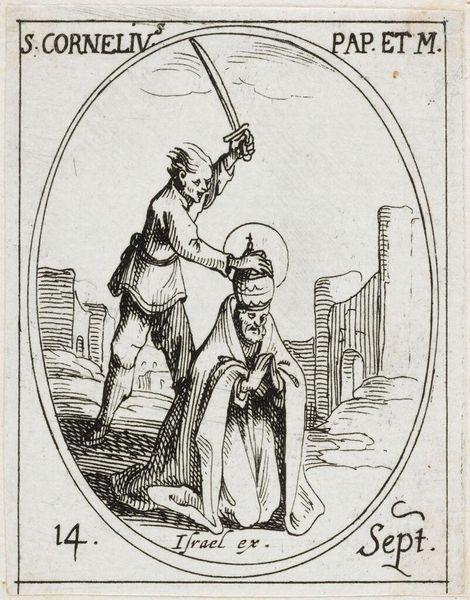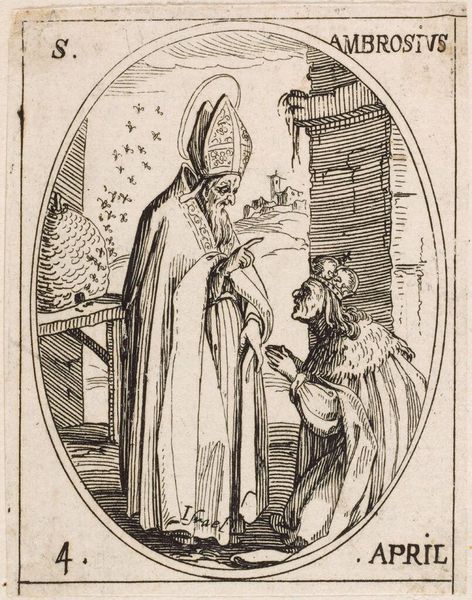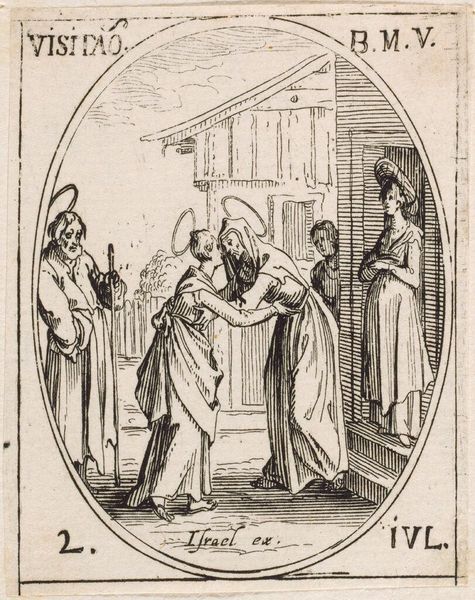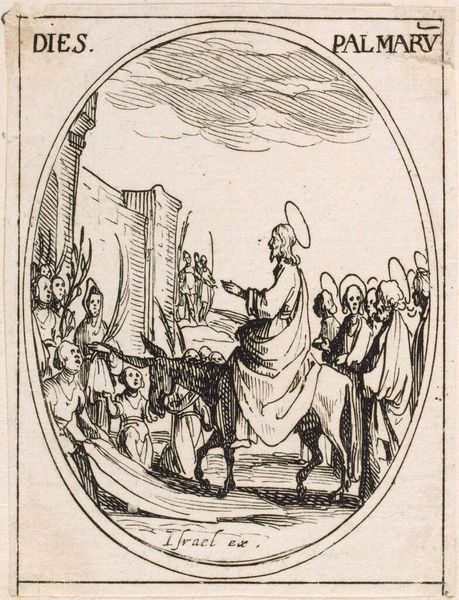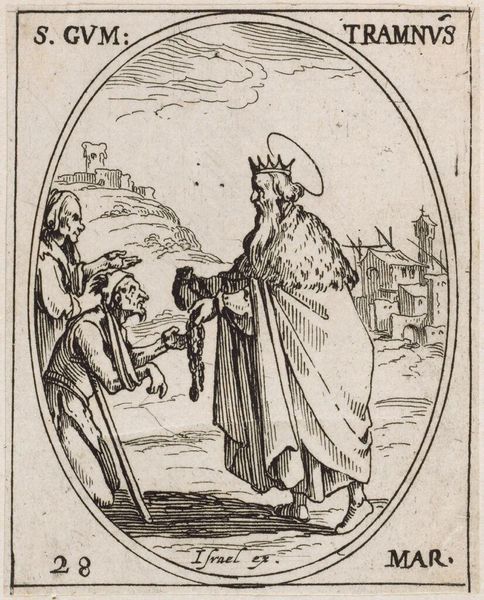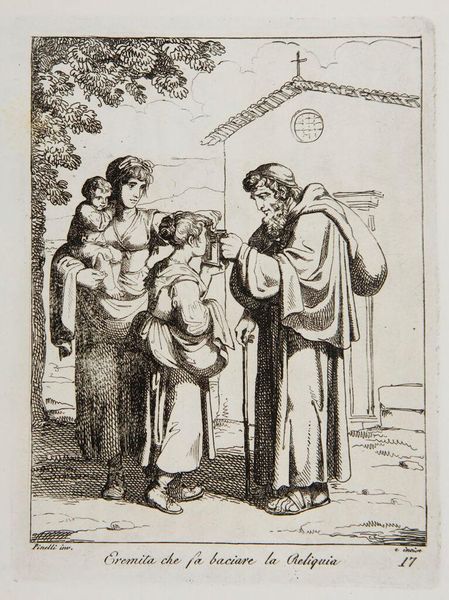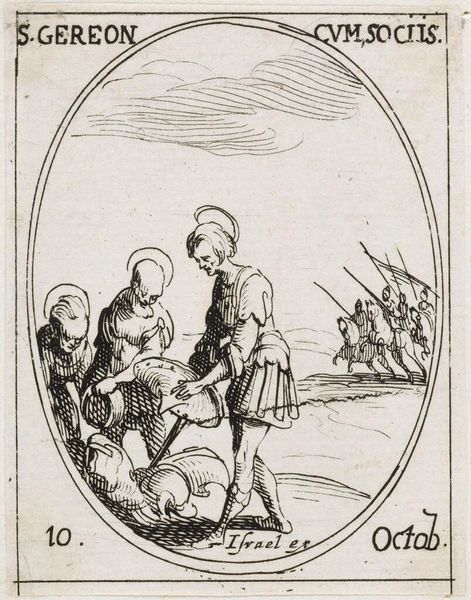
Dimensions: 7.6 x 4.9 cm (3 x 1 15/16 in.)
Copyright: CC0 1.0
Curator: Jacques Callot's miniature etching, "Salvator Mundi," presents a complex scene within a mere 7.6 by 4.9 centimeters. The oval composition and precise linework immediately strike me. Editor: The level of detail for such a small image is remarkable, but what about the socio-economic factors that might have influenced the production of this small art piece? Curator: Indeed, the crispness of the lines suggests a highly skilled artisan. Observe how Callot uses hatching and cross-hatching to create depth and shadow, the balance, the tonal gradations. Editor: I'm more curious about the "Israel ex." inscription. How did Callot's origins in Lorraine, and subsequent travels to Italy, shape this work? The materials and labor to produce and distribute prints like these... it all speaks to a wider network. Curator: That's valid, but let's consider the symbolism. Christ is depicted holding a cloth with skull imagery. The formal contrast between the divine and the memento mori is compelling. Editor: And the market for these kinds of religious images. Were they intended for personal devotion, didactic purposes, or as commodities in a thriving religious economy? The materials alone tell a story. Curator: A story, indeed. Ultimately, Callot demonstrates impeccable technical skill and a keen understanding of visual rhetoric. Editor: And provides us with a glimpse into the intricate web of production, consumption, and belief in the early 17th century.
Comments
No comments
Be the first to comment and join the conversation on the ultimate creative platform.
